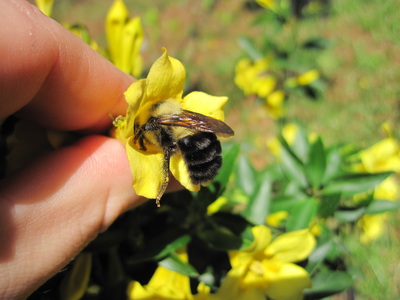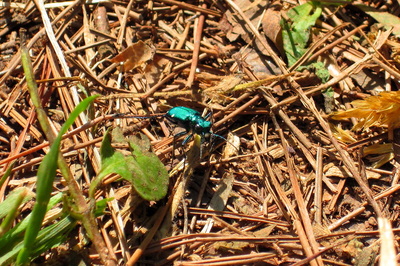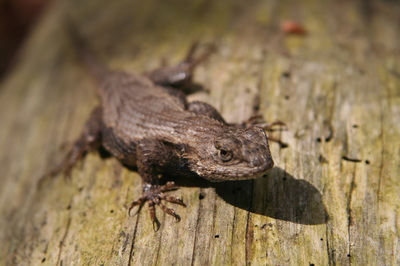Other Research Interests
My research interests are broad and come from a diversity of past experiences, though all revolve around mechanisms that structure species interactions and ultimately community processes.
My research interests are broad and come from a diversity of past experiences, though all revolve around mechanisms that structure species interactions and ultimately community processes.
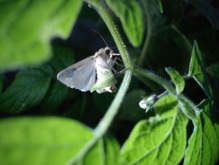
Entomology
I joined Dr. Fred Gould's ecology and evolution lab at North Carolina State University in July of 2006 as a field and laboratory assistant. I assisted in research into the coevolution of specialist insect herbivores and their plant hosts, focusing on oviposition behavior of Heliothis subflexa and its host genus, Physalis. There I gained experience in moth husbandry, plant propagation, and behavioral observation. I was also responsible for the care and maintenance of normal and pesticide resistant strains of H. virescens, rearing of H. sublexa, field sampling by use of pheromone trapping, and general technical assistance.
I previously worked in Dr. Jules Silverman's Urban Entomology lab for several years as an Agricultural Research Technician. The lab worked most specifically with the Argentine ant (Linepithema humile), an invasive species that is not only of pest control concern but of significant ecological concern as well. I was primarily responsible for the acquisition and husbandry of Argentine ant colonies for use in behavioral, molecular and toxicological studies. I also contributed to experimental design and implemented many original techniques to survey for and monitor ant populations. Other duties included the oversight of lab safety procedures and guidelines, material management, reference database construction and management, and design and construction of Chrysanthemum sp. propagation systems for observing ant-aphid mutualisms. I thoroughly enjoyed my time in the lab and am grateful for the research experience it afforded me.
I joined Dr. Fred Gould's ecology and evolution lab at North Carolina State University in July of 2006 as a field and laboratory assistant. I assisted in research into the coevolution of specialist insect herbivores and their plant hosts, focusing on oviposition behavior of Heliothis subflexa and its host genus, Physalis. There I gained experience in moth husbandry, plant propagation, and behavioral observation. I was also responsible for the care and maintenance of normal and pesticide resistant strains of H. virescens, rearing of H. sublexa, field sampling by use of pheromone trapping, and general technical assistance.
I previously worked in Dr. Jules Silverman's Urban Entomology lab for several years as an Agricultural Research Technician. The lab worked most specifically with the Argentine ant (Linepithema humile), an invasive species that is not only of pest control concern but of significant ecological concern as well. I was primarily responsible for the acquisition and husbandry of Argentine ant colonies for use in behavioral, molecular and toxicological studies. I also contributed to experimental design and implemented many original techniques to survey for and monitor ant populations. Other duties included the oversight of lab safety procedures and guidelines, material management, reference database construction and management, and design and construction of Chrysanthemum sp. propagation systems for observing ant-aphid mutualisms. I thoroughly enjoyed my time in the lab and am grateful for the research experience it afforded me.
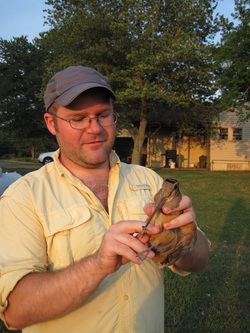
Wildlife Ecology
As an undergrad in Fisheries and Wildlife Sciences at North Carolina State University, I was afforded several unique research experiences. One of the first was an internship at Sandhills Ecological Institute (SEI). SEI is a non-profit research organization located in Southern Pines, North Carolina. The main purpose of the institute is to conduct scientific study of the long-leaf pine ecosystem, with special emphasis on the endangered red-cockaded woodpecker, Picoides borealis. As an intern, I assisted the primary staff in all aspects of research. After learning to effectively climb trees using Swedish ladders, I aided in the identification of, capture, and color banding of juvenile red-cockaded woodpeckers. After fledging, I was responsible for identifying banded individuals by scope as well as unmarked individuals and assisting in their capture and banding. Other responsibilities included habitat surveys, data entry, database management and general equipment maintenance. I also gained experience dealing with both private landowners and government personnel on public land, which would come in handy throughout my dissertation research. In the summer of 2003 I attended the NCSU Fisheries and Wildlife Summer Camp at Hill Demonstration Forest. It was comprised of a four week, field intensive class in wildlife techniques and management followed by a week of fisheries techniques and management. This equipped me with an immensely valuable skill set including techniques in forestry, local plant and tree identification, small mammal trapping, GPS navigation, bird identification by sight and call, mist netting and banding, and habitat assessment. We were also introduced to both backpack and boat electro-shock sampling, seining, water chemistry sampling, invertebrate and fish identification, pond management and other fisheries techniques.
As an undergrad in Fisheries and Wildlife Sciences at North Carolina State University, I was afforded several unique research experiences. One of the first was an internship at Sandhills Ecological Institute (SEI). SEI is a non-profit research organization located in Southern Pines, North Carolina. The main purpose of the institute is to conduct scientific study of the long-leaf pine ecosystem, with special emphasis on the endangered red-cockaded woodpecker, Picoides borealis. As an intern, I assisted the primary staff in all aspects of research. After learning to effectively climb trees using Swedish ladders, I aided in the identification of, capture, and color banding of juvenile red-cockaded woodpeckers. After fledging, I was responsible for identifying banded individuals by scope as well as unmarked individuals and assisting in their capture and banding. Other responsibilities included habitat surveys, data entry, database management and general equipment maintenance. I also gained experience dealing with both private landowners and government personnel on public land, which would come in handy throughout my dissertation research. In the summer of 2003 I attended the NCSU Fisheries and Wildlife Summer Camp at Hill Demonstration Forest. It was comprised of a four week, field intensive class in wildlife techniques and management followed by a week of fisheries techniques and management. This equipped me with an immensely valuable skill set including techniques in forestry, local plant and tree identification, small mammal trapping, GPS navigation, bird identification by sight and call, mist netting and banding, and habitat assessment. We were also introduced to both backpack and boat electro-shock sampling, seining, water chemistry sampling, invertebrate and fish identification, pond management and other fisheries techniques.
